- Kia ora
- Local arterial road traffic switch – Peka Peka to Marycrest
- Barriers the final touch before opening the new road
- New local arterial road blessed
- Celebrating the Ōtaki Pink Carnation
- Mobile asphalt plant rolls into Ōtaki
- County Road
- Overnight work to safely place bridge 8 panels
- Pedestrian access to the GWRC river reserve
- Upcoming construction milestones
 Kia ora
Kia ora
If you’re anything like me, you’ll be celebrating the drop to Covid-19 Level 1 restrictions, and a renewed sense of freedom. I hope you have all coped well through what has been a challenging time for the country.
Here on the PP2Ō Expressway project, we are also celebrating the progress being made on the Expressway as we prepare to shift traffic from State Highway 1 (SH1) to the new Local Arterial Road (LAR) Stage 2 in October.
The traffic switch will occur in two stages – northbound traffic will be first to move on to the LAR, followed by southbound traffic about a week later. At this stage, we’re aiming for the full switch to have taken place by 11 October 2020, but we remain in the hands of the weather gods and the forecast isn’t looking too flash for the next couple of weeks.
Once traffic is switched, bridge 10 at Marycrest will be opened for residents in the Cavallo Farm area.
The shared pathway, running alongside the LAR, will also be complete. Although we have high interest from cyclists wanting to use the pathway, because it will still be within a construction site it isn’t yet possible.
In the central area of the project, near Ōtaki Gorge Road, we’re constructing a temporary diversion for SH1 that we plan to open later this year. This will allow us to complete the intersection with the new Ōtaki Gorge Road and have it open to local traffic before Easter 2021.
Further south, bridge 8 – a single span steel bridge that will connect to Te Horo Beach Road – is also expected to open to traffic before Easter 2021. The opening of this bridge will have a positive impact for the community by easing some of the concerns that local road users have about traffic.
Until next time, stay safe, and stay well.
If you need any further information on the PP2Ō Expressway project, please call us on 0800 PP2O INFO or email pp2o@nzta.govt.nz
Ngā mihi
Chris Hunt, Project Director
Local arterial road traffic switch – Peka Peka to Marycrest
Traffic is about to be diverted from a section of SH1 onto the new local arterial road (LAR) south of Marycrest. The traffic switch will happen in two phases, and here is what you need to know.
On the evening of 4 October 2020 (weather dependent) all NORTHBOUND traffic will be diverted from the Mackays to Peka Peka (M2PP) tie-in, south of Te Kowhai Road, onto the new LAR. A chicane will be in place to help manage traffic flow. Northbound traffic will then exit on the northern online section of the LAR at Marycrest.
Active works will take place at night between 1900 and 0530 (7pm and 5.30am). A temporary speed limit of 30km/h will be in place while our workers are on site. Outside of these hours a temporary speed limit of 50km/h will be in place. Traffic management, including new road signs, will be in place.
On the evening of 11 October 2020 (weather dependent) from around 1900 (7pm) ALL TRAFFIC will be diverted onto the new LAR. The new LAR will be used until the PP2Ō Expressway opens. The speed limit for the LAR will be increased to 70km/h once the traffic switch is complete. Motorists are reminded to drive to the conditions.
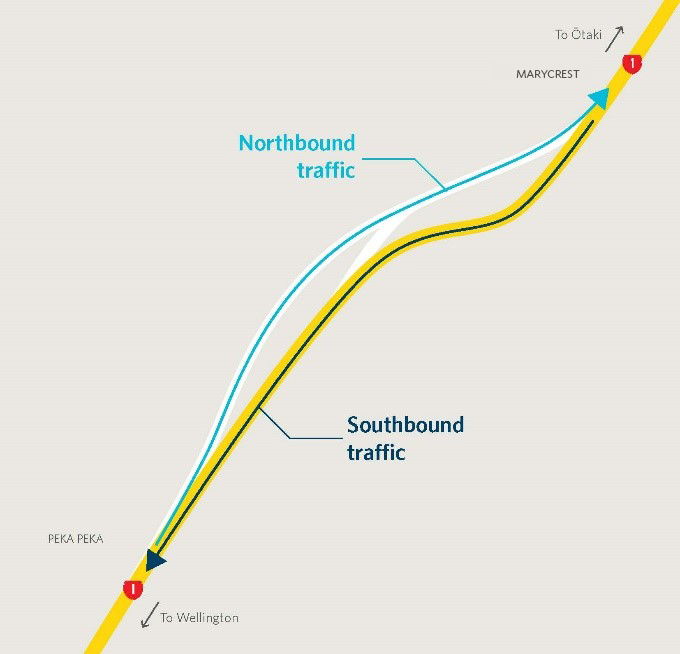
Northbound traffic switches.
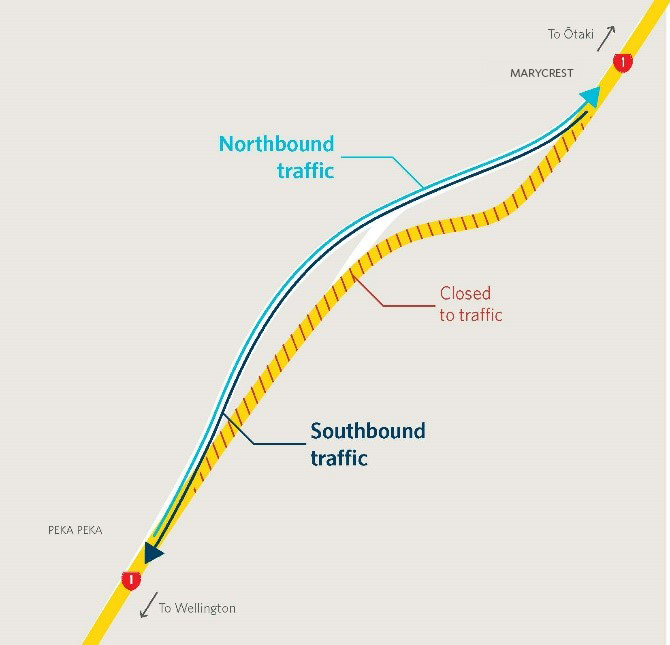
Southbound traffic switch.
Barriers the final touch before opening the new road
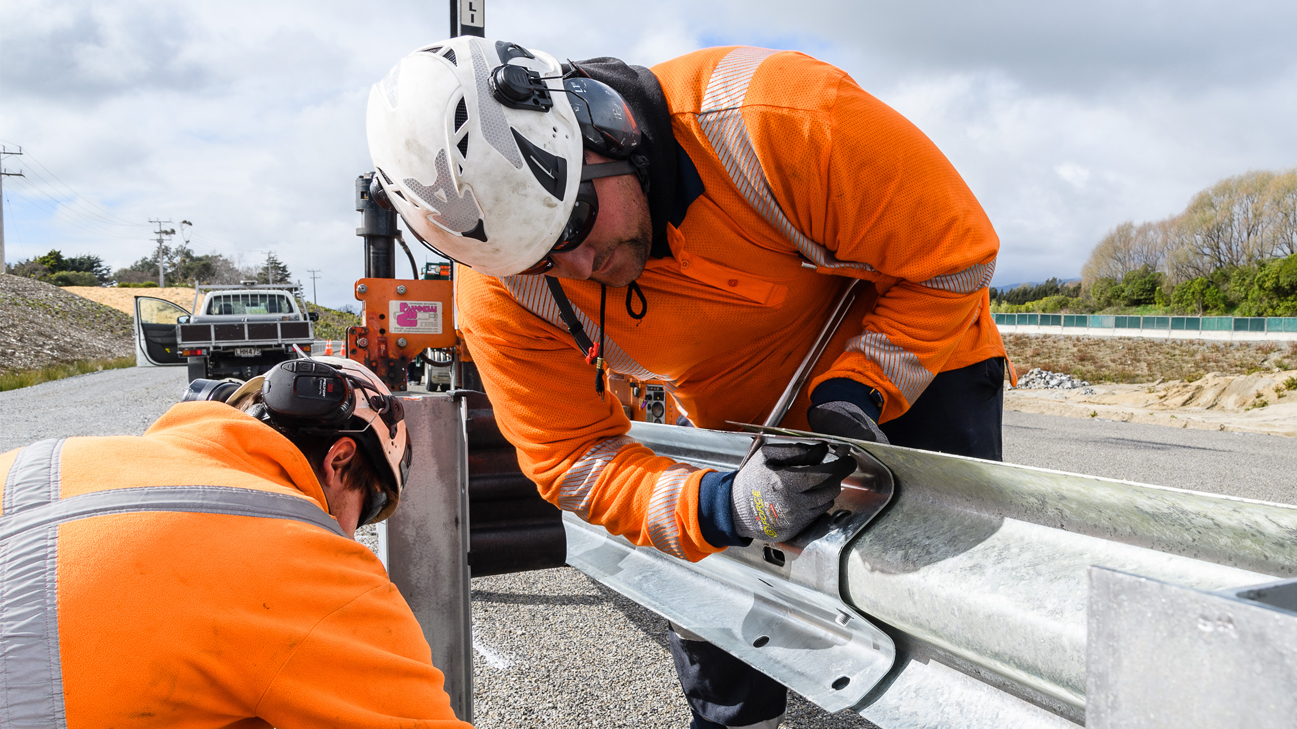
The barrier team hard at work applying the finishing touches to the LAR.
Safety barriers are like cherries on top of a cake. Layers and layers of painstaking preparation go into the foundation on top of which they are placed – but they somehow just finish everything off.
The newly installed thrie-beam barriers run all the way along the left-hand side of the LAR Stage 2, parallel to SH1.
The project has is using a combination of thrie-beam (also known as W-barriers) and wire rope safety barrier (WRSB).
“Thrie-beam safety barriers make use of a 1 metre anchor sunk in the ground attached to a beam steel post. And the wire rope safety barriers are built according to Waka Kotahi M23 specifications, with provision for oversize footing (minimum 400mm diameter, 1200mm deep) with additional reinforcement,” says Higgins Project Manager Rob Barber.
“The design of the foundation system for the line posts in a WRSB system is critical to how well the barriers function. During an impact from a vehicle, the foundations need to remain fully elastic in the soil, while still allowing the posts along the steel line to deform. After the impact, the posts can be easily removed and replaced without the need to disturb the foundations.
“Road safety barriers are designed to provide a high level of road safety by containing and redirecting errant vehicles – preventing them from leaving the road,” said Rob.
According to Waka Kotahi specifications all road safety barrier systems in New Zealand require an anchorage system to function as intended. The type of concrete footing that goes into the ground is therefore hugely important.
From the Peka Peka tie-in, past Te Hapua Road, and on towards the old Marycrest convent, the barrier team have so far installed around 12 wire rope anchor blocks, 980 wire rope driven sleeves, 402m W-Beams, 8 W-Beam leading end terminals, and 2 sections of thrie-beams.
Our crew of five are making fantastic progress, and confident in the knowledge they’re making the PP2Ō Expressway safer for everyone who’ll be using it.
New local arterial road blessed
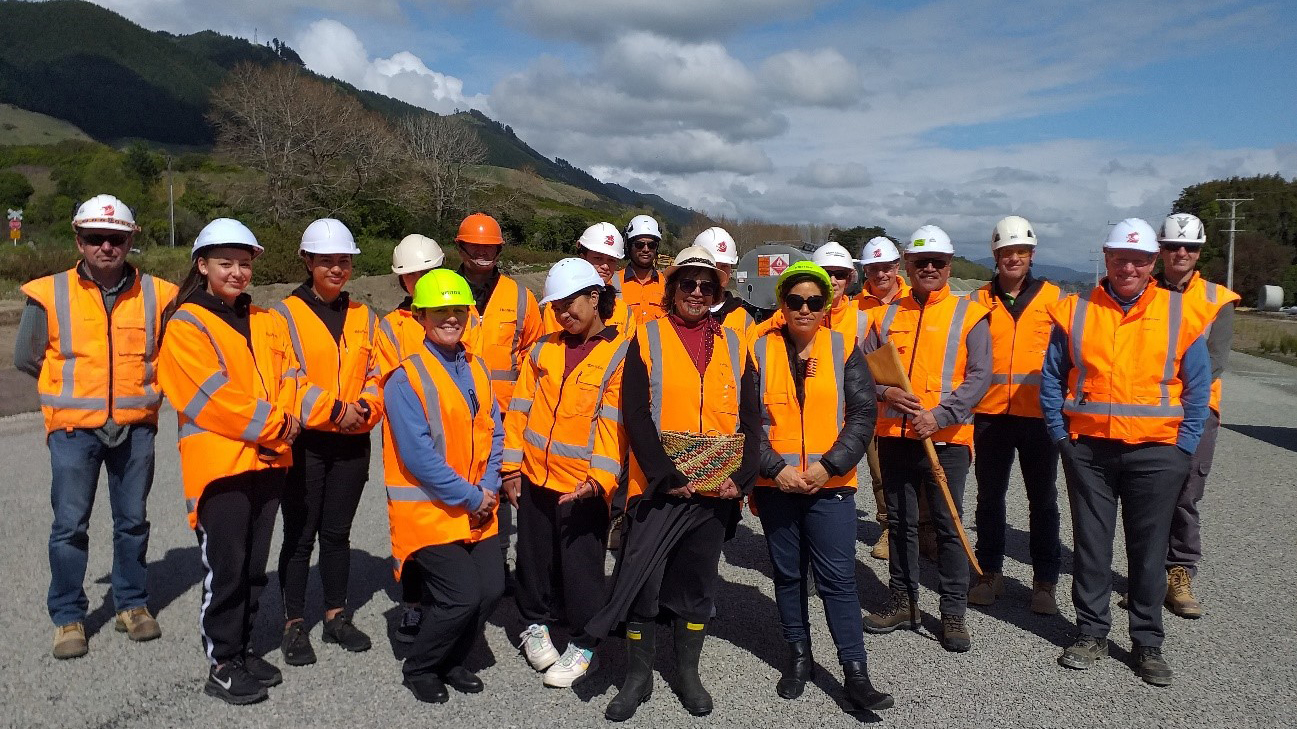
Guests and Fletcher staff assemble at the end of the approximately 1.2 kilometre walk on the LAR after attending the blessing of the new road.
PP2Ō Kaitiaki Rawiri Rikihana (pictured fourth from left) led a moving ceremony to bless the new local arterial road (LAR) Stage 2 at Marycrest on Monday, 21 September 2020. Traffic will be switched from SH1 onto the new road in October.
Celebrating the Ōtaki Pink Carnation

The Ōtaki Pink Carnation.
The famous Ōtaki Pink Carnation is one of the town’s most beloved contributions. The bloom is widely used by florists and its clean, vivid colouring make it an enduring crowd pleaser.
During community engagement, the carnation was consistently identified as a relevant part of the Ōtaki history and cultural fabric and was referenced by a diverse range of community groups including mana whenua Ngā Hapū o Ōtaki, the Ōtaki Historical Society, Keep Ōtaki Beautiful and Friends of the Ōtaki River.
So, a celebration of the Ōtaki Pink Carnation would be a natural fit within the cultural and art projects being developed as part of the PP2Ō Expressway, and introducing the bloom to whole new generation seemed an ideal way to do it. So evolved the Te Horo School Art Project. The school’s principal and art teachers were delighted with the idea and plans were hatched to make the event a reality.
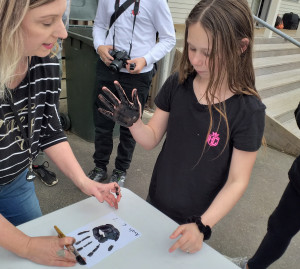
Fletcher staff member and Te Horo School parent, Natasha Gray, works with the pupils to capture the handprints which will make up the petals on the Te Horo Art Project.
Te Horo School pupils, all 237 of them, launched the project on Friday, September 25 with a sausage sizzle. This was followed by an art class, which saw pipe cleaners and tissue papers contorted into flowers, and a colouring competition of the design to be featured on the inside of the Te Horo underpass – part of the PP2Ō shared pathway.
The children captured their handprints in paint on paper to create flower petals, which will help create a digital mural on the walls of the underpass. They also had the option of putting their initials into their print so in future years they will be able to point out their role in the creation of the mural to their own children.
“The children are very excited about the project and participating in something that will have a visual impact on the community,” says Te Horo School Principal Michele Tate.
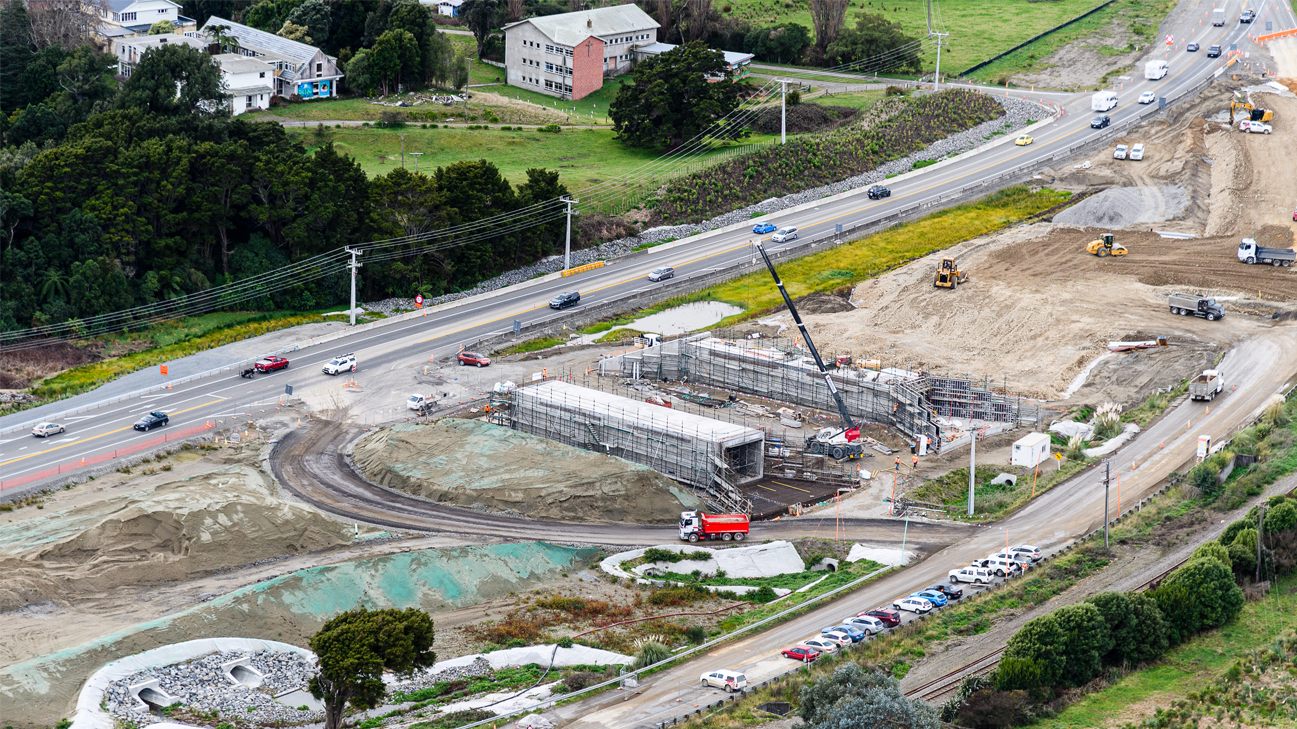
Te Horo box culverts from above with Marycrest Convent in the background.
Shared path culvert paint treatment
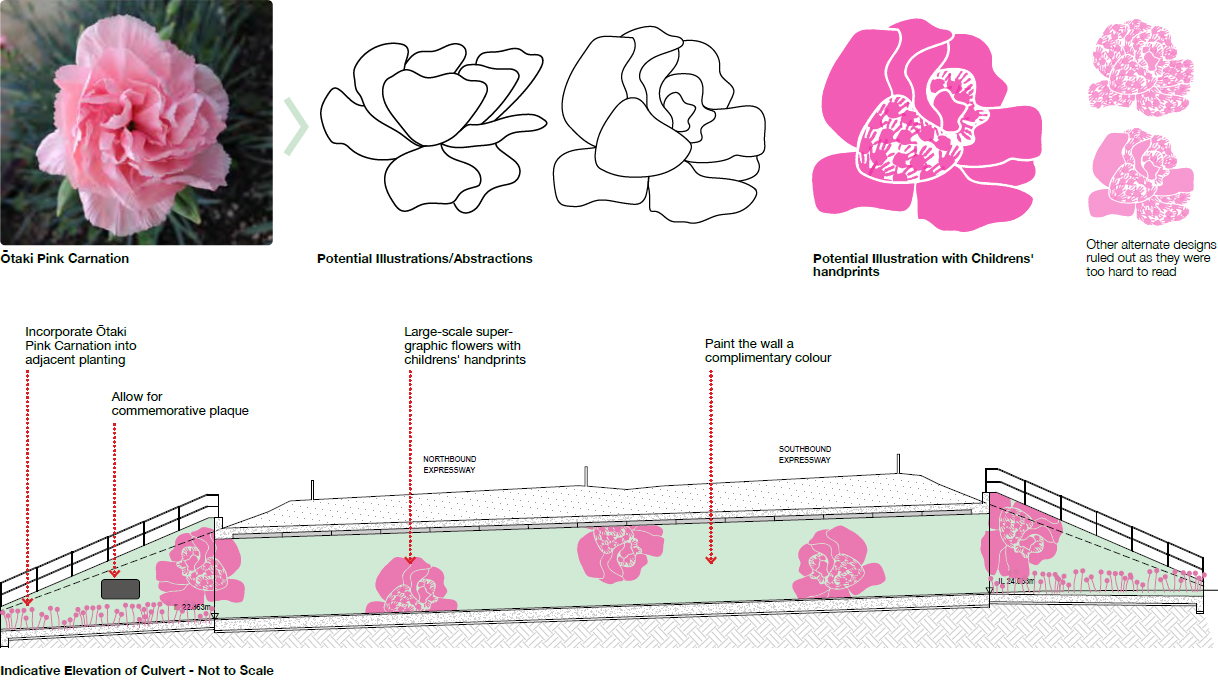
Mobile asphalt plant rolls into Ōtaki
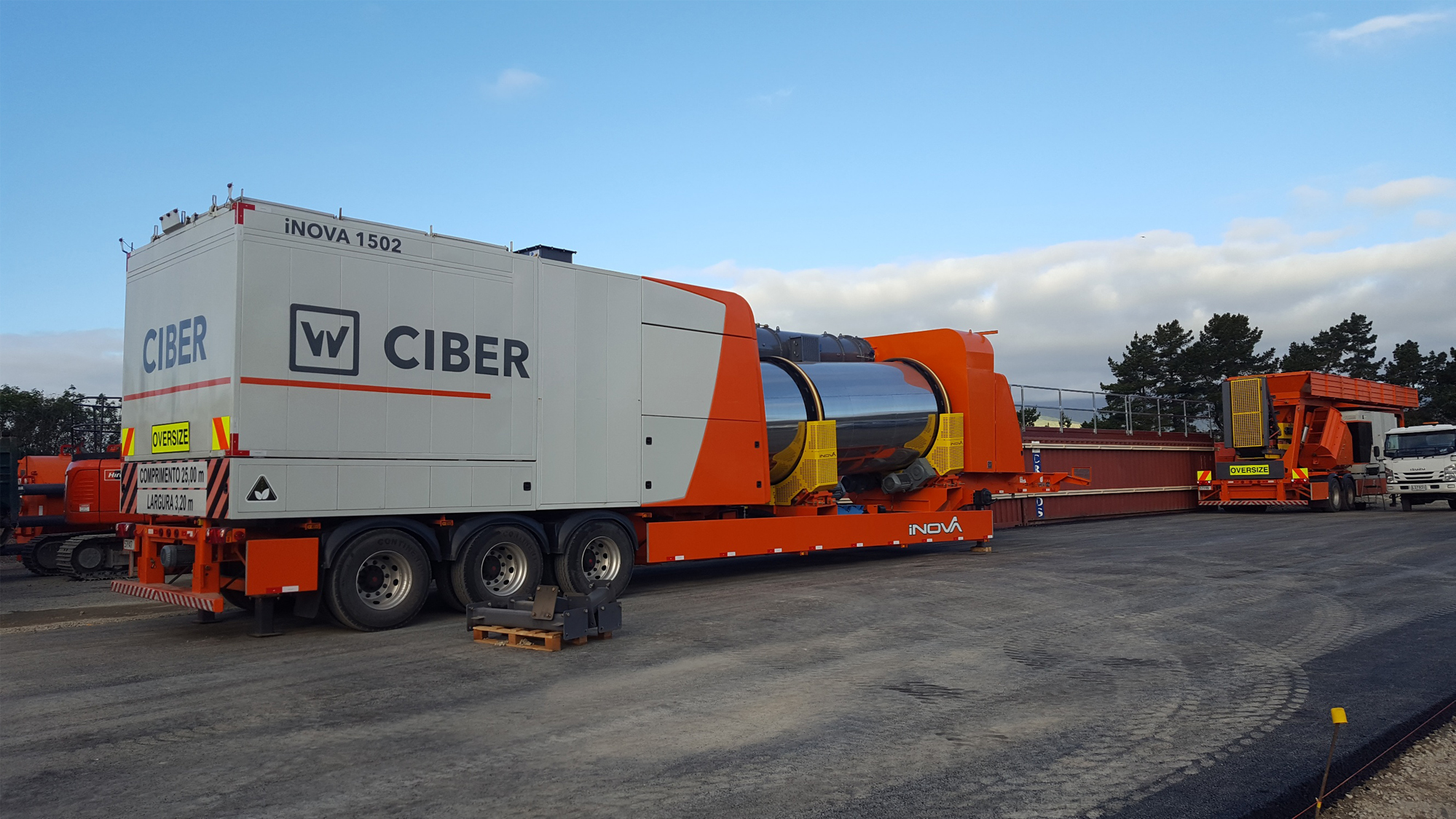
Ōtaki’s new mobile asphalt plant.
A mobile asphalt plant is currently being assembled at Ōtaki for use on the PP2Ō Expressway project. It’s expected to be operational by the end of October and will mean that Higgins can produce asphalt locally, rather than trucking it in from outside the region.
Mobile asphalt plants are ideal for relatively short-term projects like PP2Ō as they are quick to assemble and don’t require a permanent fixture to be built. The mobility of the plant means it can be easily disassembled and transferred to the next project when the PP2Ō project is done.
Higgins has been manufacturing asphalt for the last 50 years and currently operates 12 asphalt plants throughout New Zealand, together with one other mobile plant. Each plant, including the new Ōtaki mobile asphalt plant, is voluntarily operated to the Civil Contractors New Zealand ‘Asphalt Plant Accreditation Scheme’ (APAS). This means that Higgins undertakes quality control testing throughout the production process, including raw material and daily batch sampling, to ensure the final product performs as planned.
The asphalt plant is expected to produce around 100 tonnes of asphalt per hour but has the capacity to increase by a further 50% if required. It’s anticipated that approximately half a dozen workers – ranging from experienced plant operators to general labourers – will be employed at the plant.
The asphalt plant is being assembled within the Winstone Aggregates Quarry on a purpose-built platform to cater for the unique stormwater needs of the plant. David McIlroy, Higgins National Manager Project Controls, would like to remind the community that with an increase in trucks and heavy machinery the area is a ‘no go zone’ for the public.
“There is already a lot of heavy vehicle movement within this area and the mobile asphalt plant will be adding even more to this, so it absolutely is an area that, for their own safety and that of our workers, the public should avoid straying into,” said David.
County Road
On Monday 12 October 2020, access to County Road from SH1 will close to allow work to begin on forming the final cul-de-sac. You will notice activity in the area as verges are cleared, new road markings applied, and other safety elements implemented.
The road will become two-way to allow access to properties along County Road. The speed limit will remain 30km at the entry into the road and 50km up the hill.
Overnight work to safely place bridge 8 panels
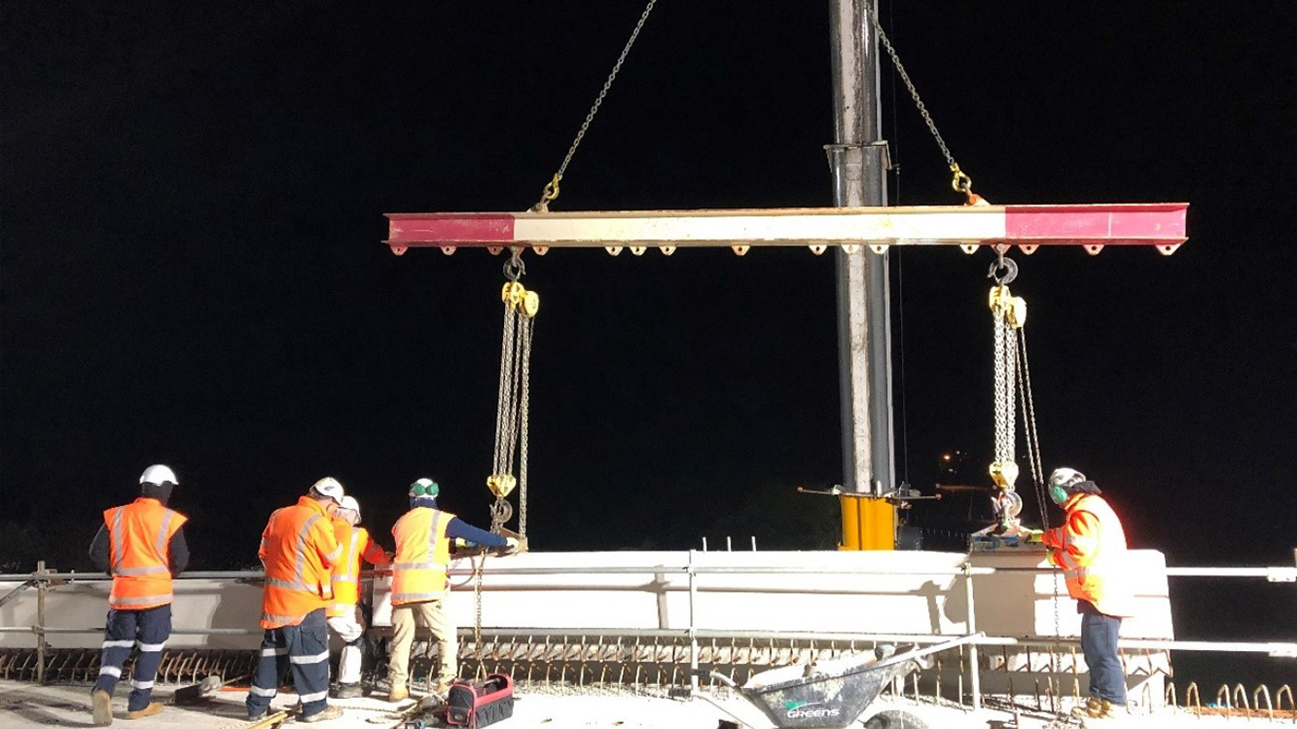
Lifting bridge 8 panels into place.
The Structures crew have been hard at work placing the panels on bridge 8. To minimise disruption to road users this work was carried out between 10pm and 3am on Sunday 20 and 27 September, with stop /go traffic management in place so the panels could be safely lifted on to the bridge and secured. The bridge is expected to be open to traffic by Easter 2021.
Pedestrian access to the GWRC river reserve
Temporary public pedestrian access to the Greater Wellington Regional Council (GWRC) river reserve is now in place.
For motorists travelling south, you will be able to access the river reserve in the carpark on the west side of SH1, in the old rest area just before the turn-off to Ōtaki Gorge Road.
For those travelling north, you will need to turn down Te Waka Road and drive to the parking area at the end of the road (see graphic 1 below). You can then access the track toward the reserve via the river bank track (see graphic 2 below).
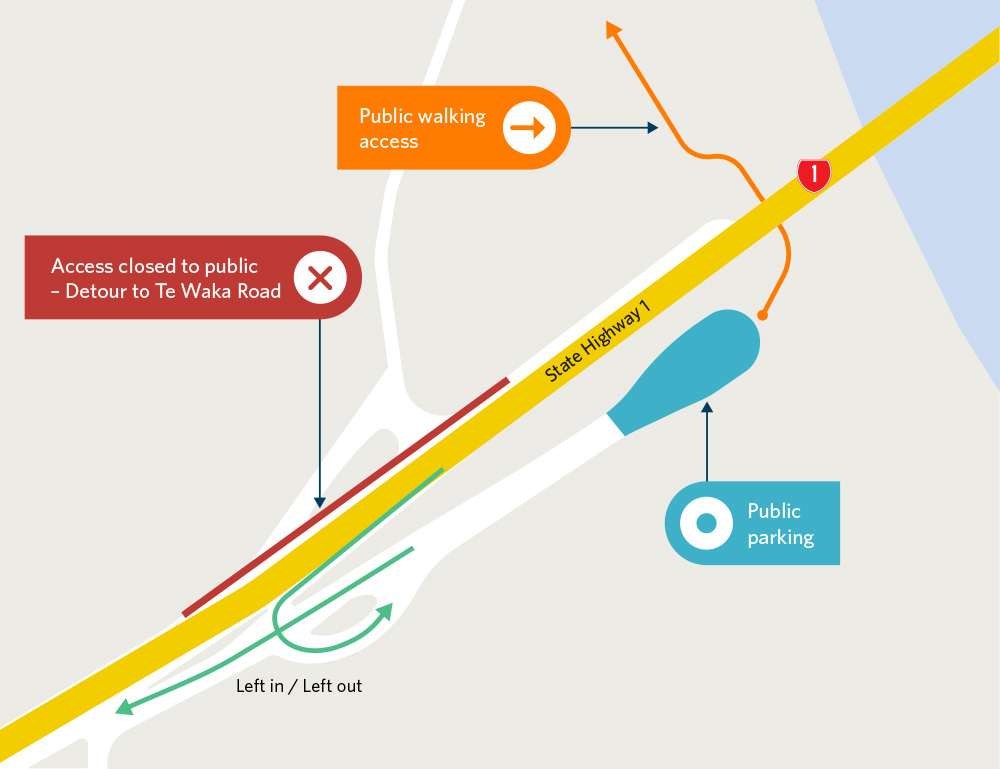
How to access reserve travelling south.
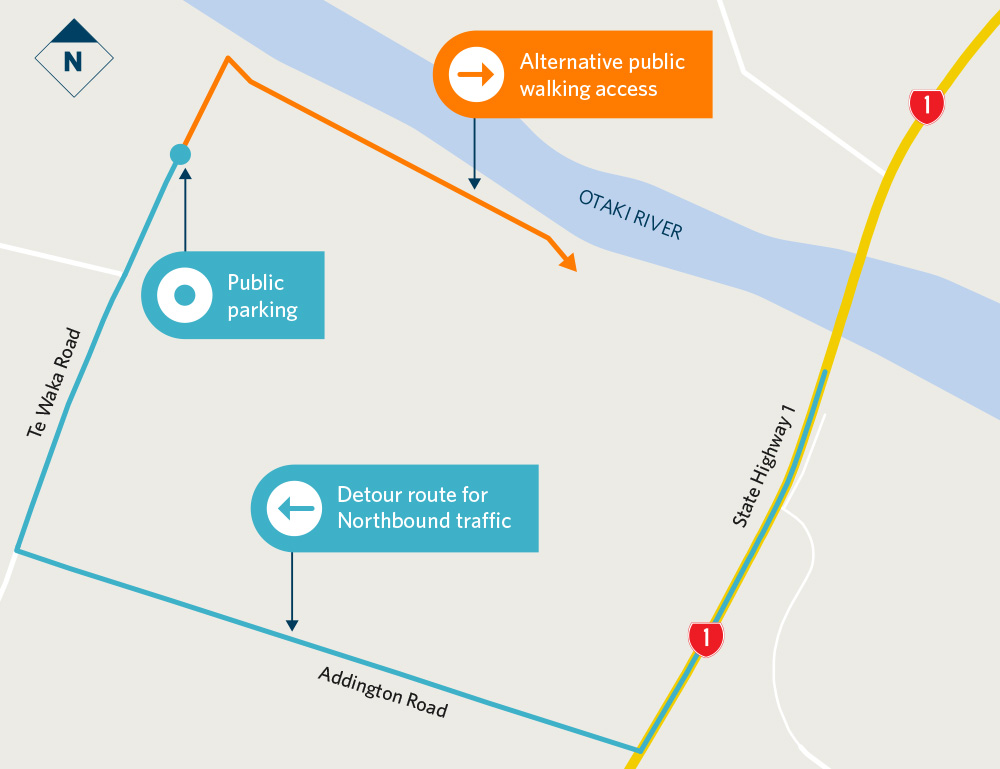
How to access reserve travelling north.
Upcoming construction milestones
Northern area update
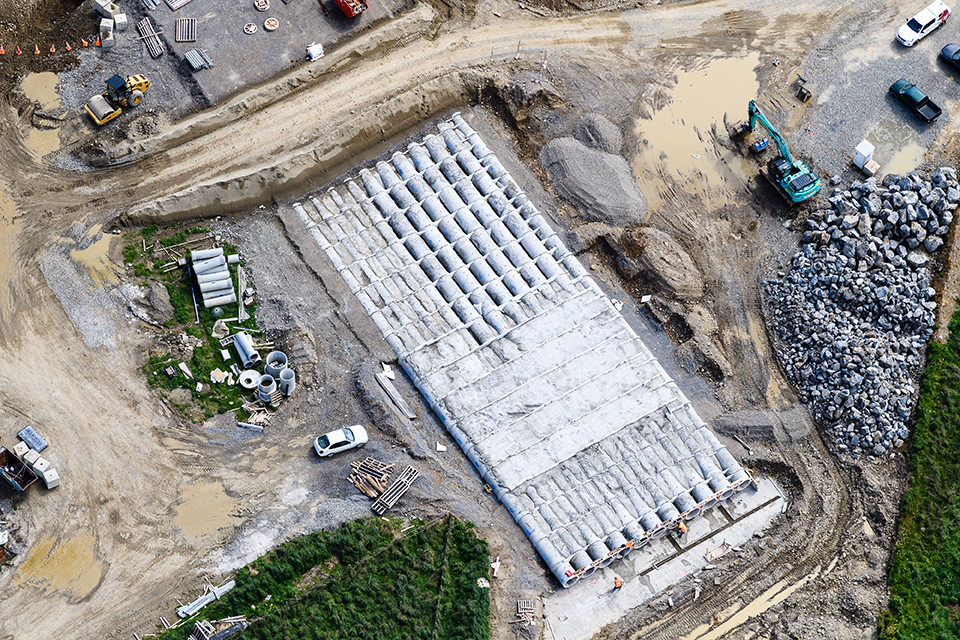
Earthworks by bridge 1 just south of Taylors Road.
Earthworks have continued through the month to the embankment and subgrade works for the realigned Taylors Road. Construction access onto bridge 1 (Waitohu Stream bridge) was achieved and the side fascia panels are well on the way to all being placed next month. Landscaping/planting continued through and around the bridges 2 and 3 areas.
Middle area update
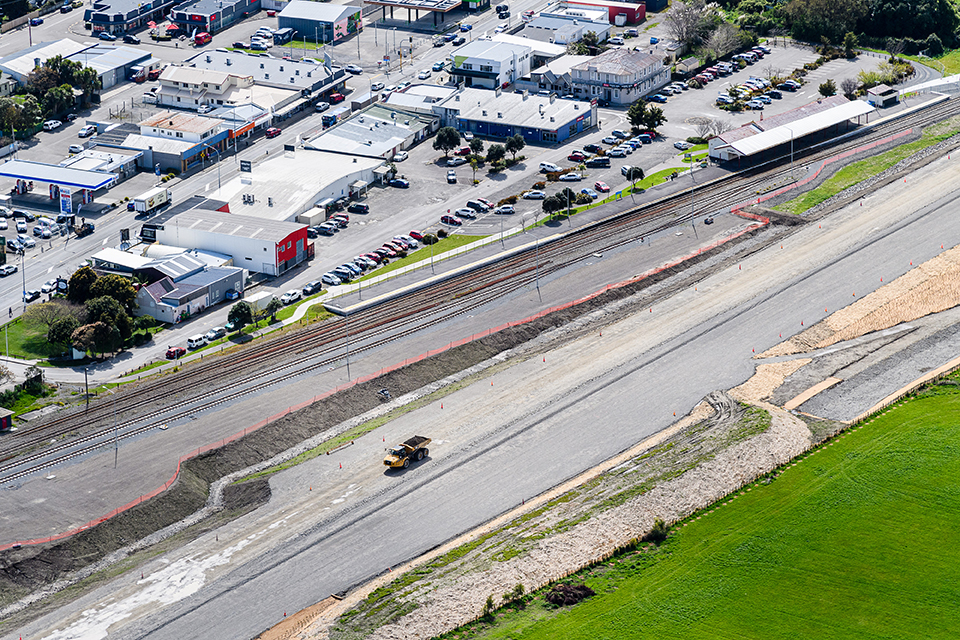
Road construction continues behind the Railway Station in Central Ōtaki.
Earthworks, pavement and the last of the seasons landscaping works are all progressing in multiple fronts within this area. Works continued on a temporary section of SH1 to allow construction of the Ōtaki Gorge partial interchange. Works are progressing toward the planned opening of the first stage of realigning traffic onto a new section of School Road though have been put back somewhat with the wet weather through the month. Construction of bridge 8 (the Te Horo overbridge) is on track with all the temporary works to the sides of the structure now removed to reveal a great looking crest curve over top of the existing state highway, railway and expressway.
Southern area update
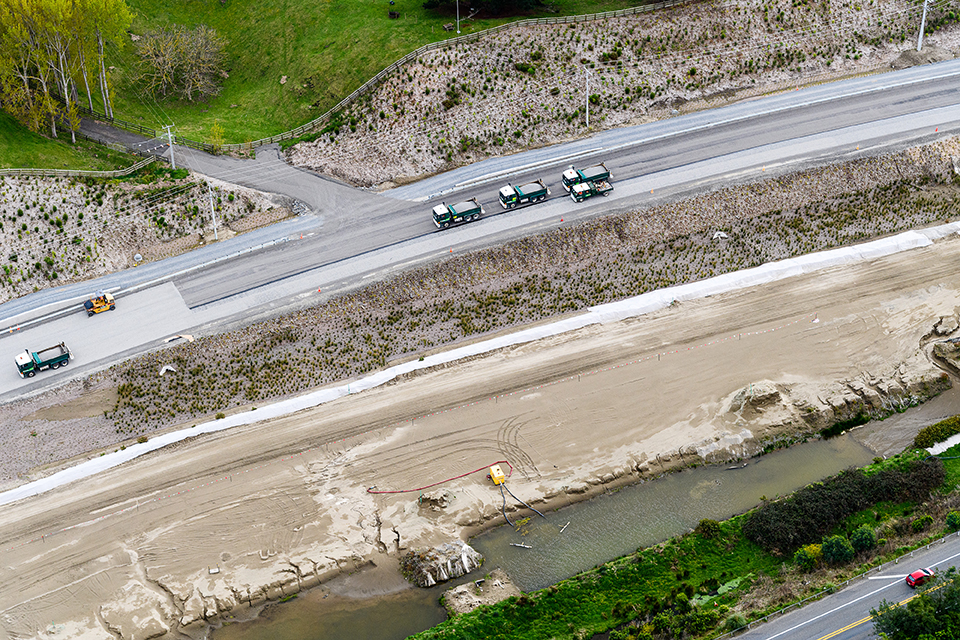
Work continues on the new local arterial road at Marycrest.
Surfacing and barrier installation works continued through the month on the local arterial road (LAR) in readiness for the planned SH1 traffic switch next month. Earthworks around the bridge 9/bridge 10/shared path underpass area continued through the month bringing the approach embankment up toward the top of those structures.